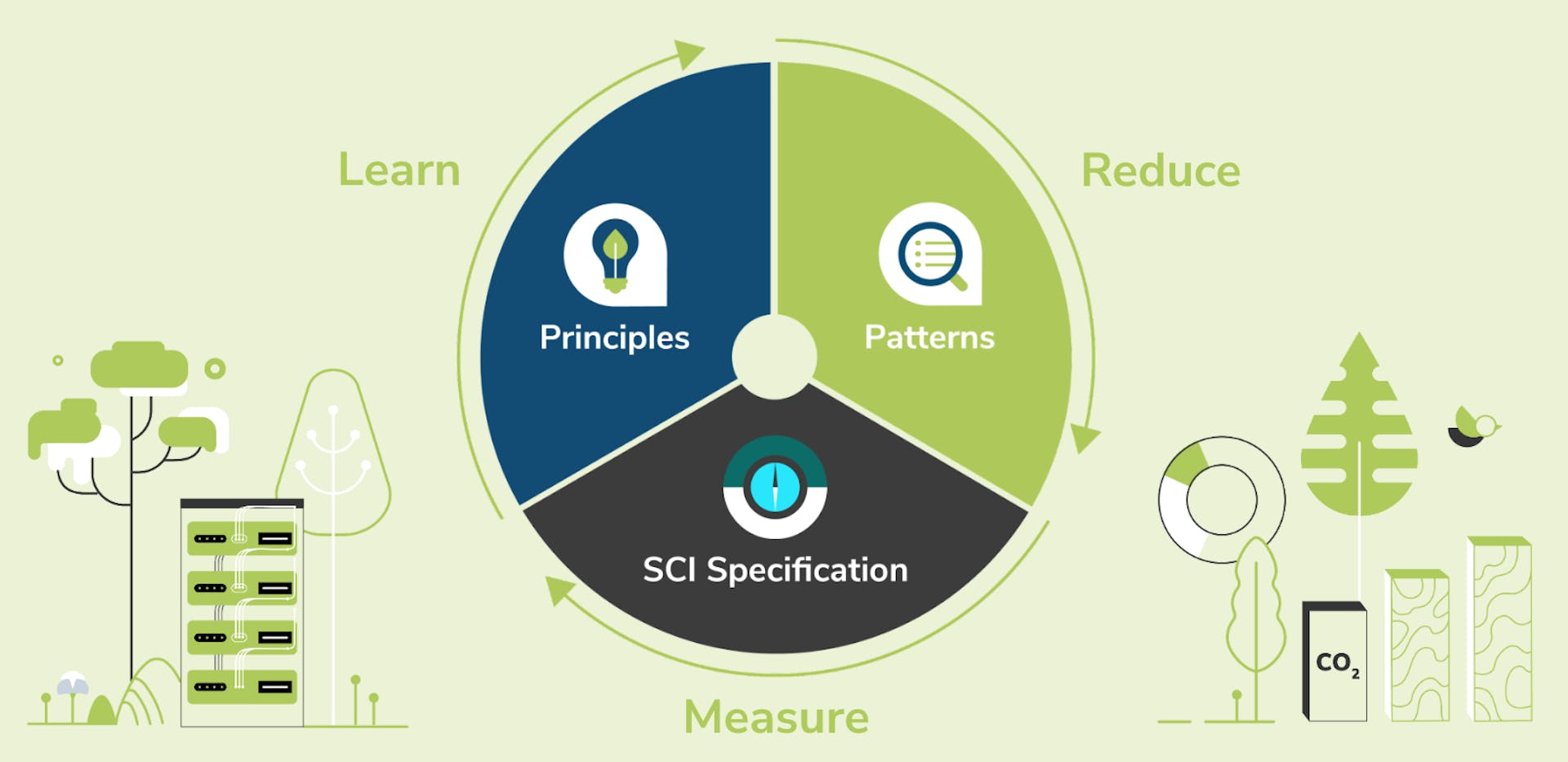Dec 13, 2022/– During the UN Climate Change Conference (COP27) meetings between Nov 6 – Nov 18, the Green Software Foundation (GSF) released new tools and resources providing organizations a coordinated 3-step action plan to measure, learn and reduce their carbon emissions for the first time. The GSF also launched The State of Green Software Survey, the largest survey in green software ever to be conducted.
Software powers everything we do today—from our phones to our cars to our cities—so it's critical we recognize the role software and software practitioners can play in protecting our climate. Asim Hussain, Executive Director and Chairperson of the GSF states, "The concerted use of these resources allows technology leaders to decarbonize software at scale and achieve climate targets."
Measure: To measure emissions, organizations can now use the Software Carbon Intensity (SCI) Specification v.1.0, a standardized protocol to calculate the rate of carbon emissions for a software system, for example carbon per minute for a streaming application.
Learn : To address the changes necessary to decarbonize software, the free online Green Software Practitioner Course allows practitioners at any skill level to acquire the required knowledge and technical skills for decarbonizing software.
Reduce : To reduce the carbon emissions of their software , practitioners can implement several patterns from the Green Software Patterns Catalog, an online open-source database of green software patterns categorized by field of engineering, technology and domain.
The progress in green software made to date stems from the GSF’s effort to facilitate dialogue and coordinated action to identify and resolve critical barriers across knowledge and resourcing and improve standards of practice across applications to decarbonize software.
Until Dec 31, the GSF invites all software practitioners to take the survey for the upcoming State of Green Software Report (2023 release). Software practitioners at every level are encouraged to participate. No prior experience in sustainability or green software is required.
A few of GSF’s steering committee members share their thoughts on the latest developments in green software:
“Organizations need to put green software at the heart of their digital transformation. It’s encouraging to see the substantial progress the Green Software Foundation is making, by bringing together leaders from across industries to provide the tools and resources needed to help companies make impactful advances in the decarbonization of software.” - Sanjay Podder, Technology Sustainability Innovation lead at Accenture.
“Global research commissioned by Avanade shows that 93% of companies are struggling to be sustainable and only 30% are currently taking advantage of green software principles to consume fewer resources. The new Software Carbon Intensity specification will greatly increase accessibility to the knowledge and technical skills required to apply green software principles, making it easier for organizations to reduce the carbon impact of their IT operations.” - Chris Lloyd-Jones, Head of Open Technologies, Avanade
“BCG X is a proud sponsor and steering committee member of the GSF, and we are excited to continue our active engagement in taking action against climate change. Our clients are becoming increasingly concerned with the carbon impact of their AI and software solutions, and we need tools and standards to measure and reduce their impact. Even internally, BCG is engaged in measuring and reducing our own software footprint as part of our global carbon strategy.” - Matthew Kropp, Managing Director and Partner, Boston Consulting Group (BCG)
“At Globant, we understand technology’s impact on the environment and share the responsibility to support projects oriented to making our products and software greener. We need to adopt a carbon-oriented mindset with a renewed design approach to sustain transitions and curb emissions in every action we take.” - Santiago Fontanarrosa, VP of Technology at the Sustainable Business Studio at Globant
“The Green Software Foundation is building out the toolbox for the software practitioner of the future.”- Scott Chamberlin, Senior Director of Sustainability Software and Ecosystems, Intel Corporation
“Publishing SCI v1.0 is a huge step since measuring is essential for reducing. At the same time, reduction efforts must be executed, and the tools released should help those actions. IT system emissions are non-negligible, and we will continue to work hard to reduce them.” - Toru Shimogaki, Head of Green Innovation Office, NTT DATA
“The Green Software Foundation initiatives announced today will improve the tech ecosystem for all by building a shared understanding and empowering technologists with best practices and standards to measure their sustainability performance. It’s a great step forward on the start of a journey that is daunting in both how far we have to go, and how fast we have to get there.” - Elise Zelechowski, Global Head of DEI, Sustainability, and Social Change, Thoughtworks
"Being able to understand the carbon output of the applications we build is incredibly powerful. The tools developed by the GSF and its partners are paving the way to set a new standard in sustainable software." - Kin Chiu, Executive Director and Sustainable Technology Lead, UBS
Please read our COP27 Book of News for more insight into the latest developments to decarbonize software.
Media Contact: Namrata Narayan | +1 647-886-7179 | [email protected]
About the Green Software Foundation
The Green Software Foundation is a non-profit formed under the Linux Foundation with the mission to create a trusted ecosystem of people, standards, tooling, and best practices for building green software. Members of the Green Software Foundation represent a balanced mix of for profits, nonprofits and academia from around the globe and include a number of Fortune Global 500 firms. The Foundation operates by consensus. Four Working Groups — Standards, Trademark, Innovation and Community — currently oversee the ongoing projects of the Foundation.
This article is licenced under Creative Commons (CC BY 4.0)
